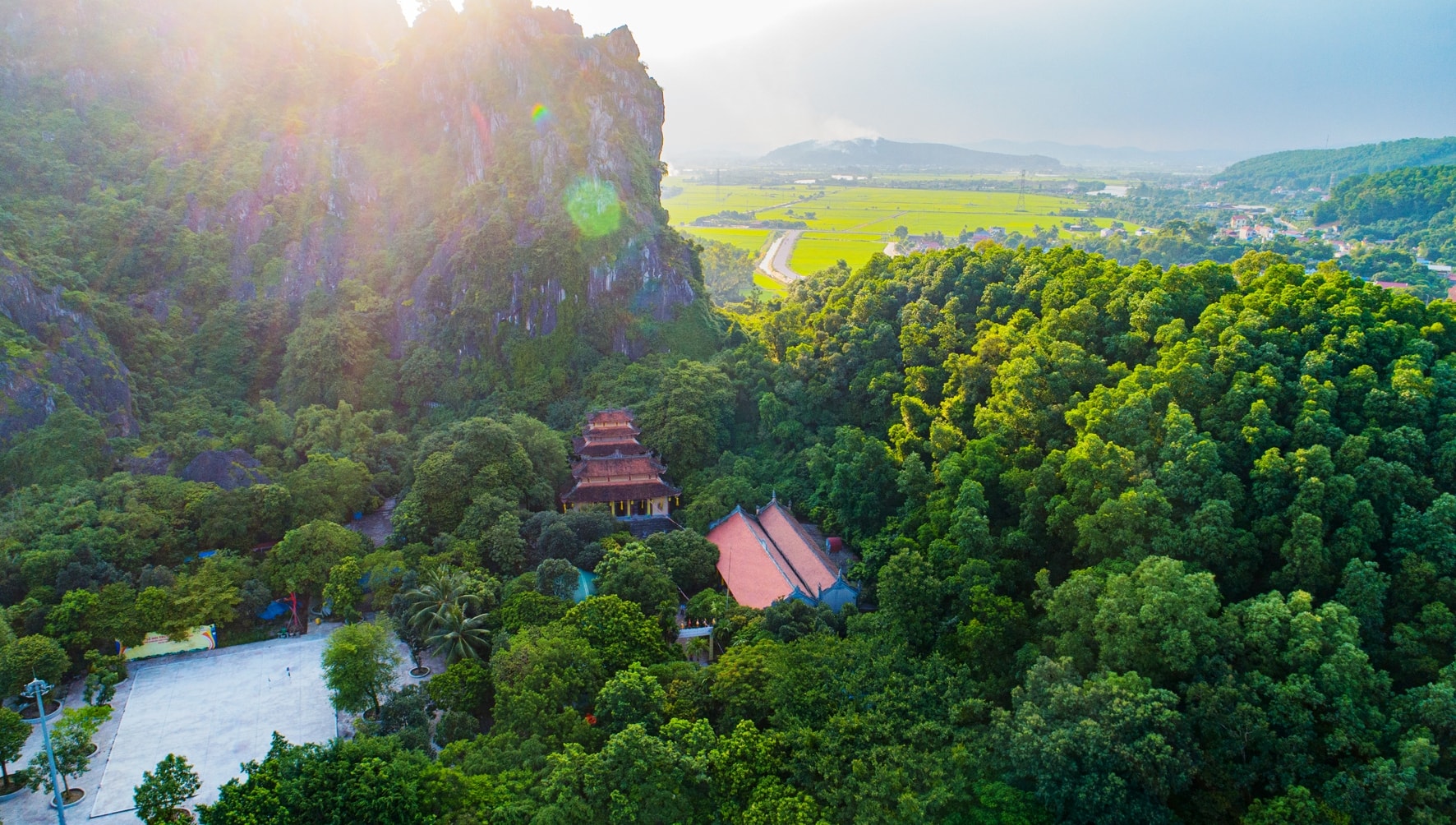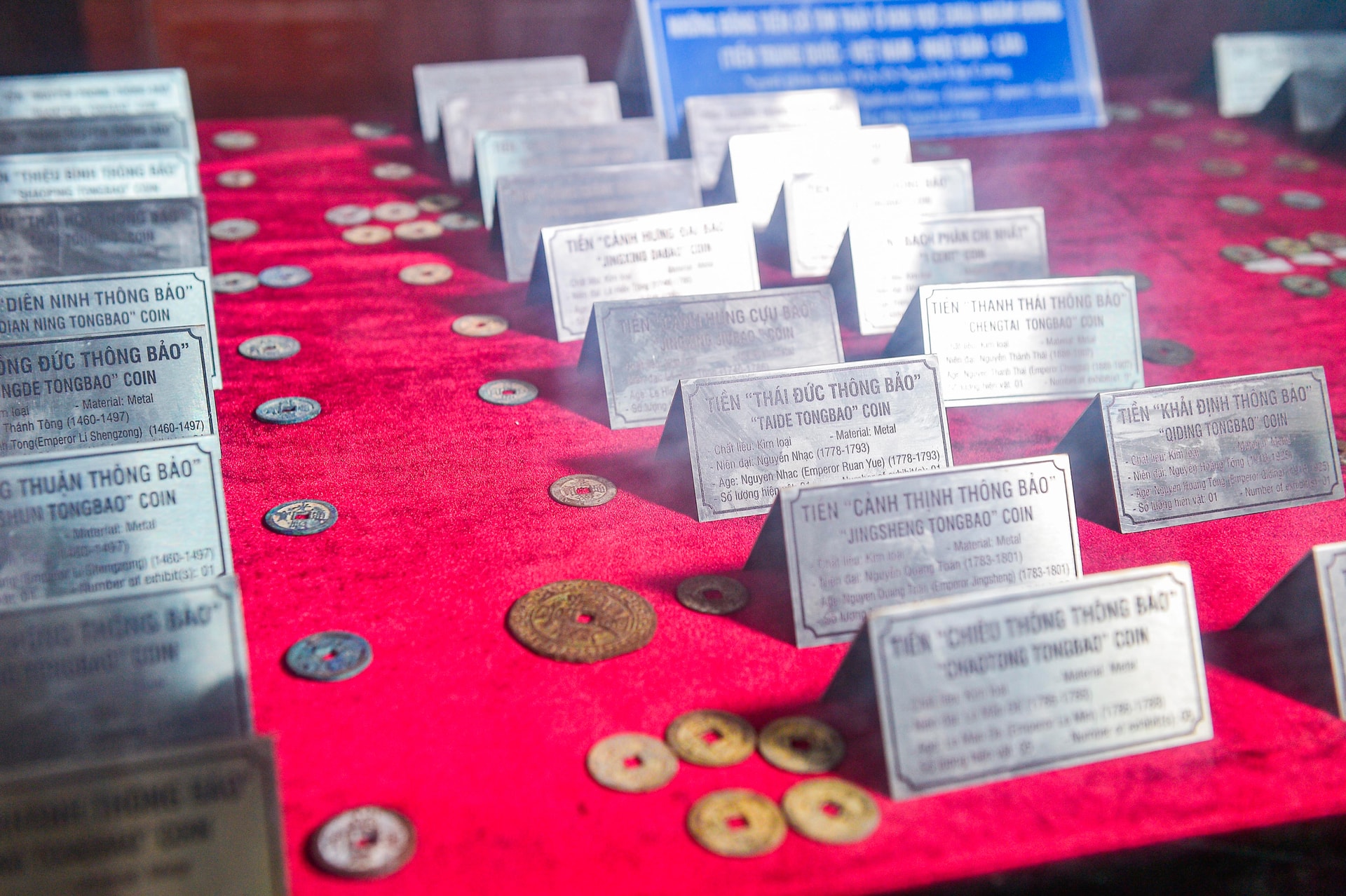Nham Duong pagoda is a unique site where both spiritual and archaeological values converge. It is one of five relics in Hai Phong belonging to the Yen Tu – Vinh Nghiem – Con Son, Kiep Bac complex that has just been recognized by UNESCO as a World Cultural Heritage site.

Ancient pagoda amid mountains
According to historical records, Nham Duong pagoda was first built during the Tran dynasty under the name Thanh Quang Tu, belonging to the Truc Lam Zen sect.
Nestled among lush greenery and a rare complex of caves, the pagoda later became the ancestral monastery of the Vietnamese Caodong School in the 17th century under Zen Master Thuy Nguyet. Among the caves surrounding the pagoda, the most notable is Thanh Hoa, where Master Thuy Nguyet entered nirvana.
During the resistance wars, the pagoda served as a revolutionary base, hiding weapons and food supplies. After the wars, Buddhists and local residents repeatedly rebuilt the pagoda, and by 1996, thanks to the efforts of nun Thich Dieu Mo, the ancient pagoda gained its dignified appearance seen today.
At present, the pagoda is embraced by rocky mountains and caves, shaded by nearly 250 plant species. Visitors may also encounter a troop of more than 30 monkeys living in the compound, a rare sight at Vietnamese pagodas.
Touching archaeological treasure

What sets Nham Duong apart from many other pagodas is its remarkable archaeological value. The site preserves thousands of artifacts dating from the late Paleolithic era (around 50,000 years ago) through the Ly, Tran, Le, and Nguyen dynasties.
At Thanh Hoa cave, archaeologists once discovered 471 fossilized human and animal bones and teeth. In addition, numerous stone and bronze tools, weapons, and ornaments, many engraved with images of dancers, deer, and hunting dogs reflecting the Dong Son culture, have been unearthed. These finds reveal that ancient Kinh Mon residents cultivated wet rice, hunted, crafted tools, and even practiced rituals and music.
The temple also houses a collection of 728 ancient coins from Vietnam, China, Japan, and Laos, along with more than 700 ceramics dating from the 1st to the 20th centuries, making Nham Duong pagoda a “living archive of history.”
Today, the pagoda attracts both pilgrims and curious travelers. Its annual festival, held from the 5th to the 7th day of the third lunar month, features a water procession, incense offering, prayers for national peace and prosperity, and festive activities that draw large crowds of visitors and Buddhists.
Beyond the tranquility of the Buddha’s sanctuary, tourists also have the chance to journey back in time, exploring rare archaeological traces that shed light on human development in this land.
HUY TUAN